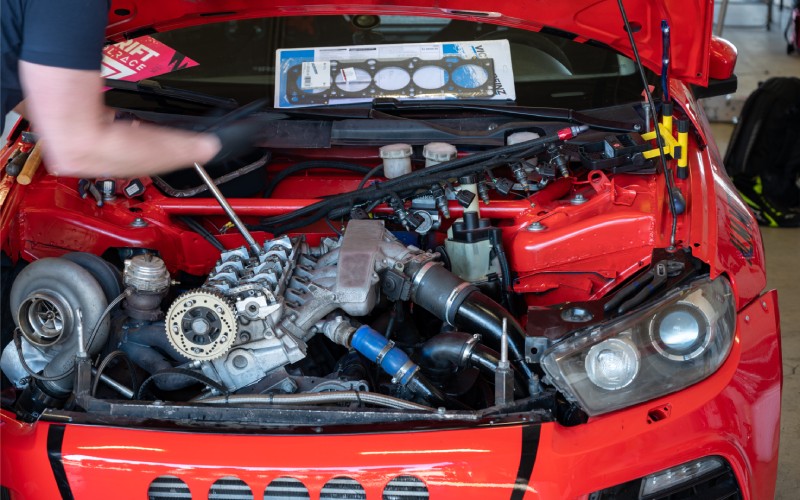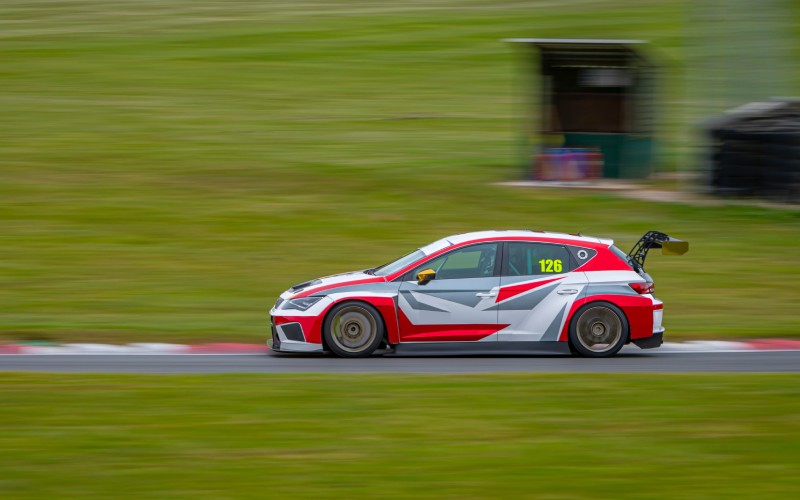How To Prepare Your Car for Its First Race

Racing is an exhilarating sport that requires speed, skill, and precision—the perfect combination for a heart-pounding event. Preparing your car for its first race is a meticulous process that requires planning and practice. This guide will show you how to prepare your vehicle for its first race.
Inspect and Upgrade Your Engine

Your engine is the heart of your car. Its connecting ports pump the oil through it to keep the car running up and down the race strip. Inspect the engine before entering your first competition—will it be ready in time? If not, evade signing up! You don’t want to look like an amateur with an unresponsive vehicle at the starting line.
A thorough inspection helps you catch problems before escalation. If your engine isn’t up to par with standard race car engines, upgrade it or get it examined by a professional mechanic who can ensure your make and model receive the updates it needs to end up in the finals.
Optimize Your Suspension System
A finely tuned suspension system is vital for handling and stability. Start by inspecting your shock absorbers, struts, and springs. Replace any worn-out parts to keep performance up. Make sure to adjust the suspension settings to match your driving style and the tracks.
Two recommended features to upgrade are coil overs and adjustable shocks. These components allow for fine-tuning, giving you better control over your car’s handling. Don’t overlook balancing the suspension system.
Choose the Right Tires
Selecting the right tires can make or break your performance. Racing tires provide maximum grip and stability on the track. Choose tires that match the type of race you will participate in.
Consult your racing or tire specialist if you don’t know what tire brand to get or want to know their compounds. They know the best tires to use based on tread depth. Also, they will be more than happy to review tire gauge measurements for accurate readings.
Install a High-Performance Braking System
Your car’s brakes are one of the most critical components for safety and performance. Upgrade to a high-performance braking system to ensure the braking system is fluid. Installing a new system typically includes larger brake rotors, multi-piston calipers, and high-friction brake pads.
Regularly inspect your brakes and replace any worn components immediately. Check for air bubbles and release them by bleeding the brake lines; doing so will improve the brake system. Having reliable brakes helps with navigating tight corners and avoiding accidents.
Tune Your Car’s Aerodynamics
Aerodynamics plays a significant role in your car’s speed and stability. Enhancements such as front splitters, rear wings, and diffusers can improve airflow and reduce drag. These modifications increase downforce, providing better grip and control at high speeds.
Consider investing in a wind tunnel test to fine-tune your car’s aerodynamic setup. Many professional racing teams use this method to optimize their vehicles’ performance. Even minor adjustments can significantly improve lap times and overall handling.
Fine-Tune Your Engine Management System
Modern racing cars use sophisticated engine management systems (EMS) to optimize performance. An EMS controls various aspects of the engine, such as the fuel injection and boost pressure. Tuning your EMS can significantly improve your car’s power output and efficiency.
Work with a professional tuner to customize your EMS settings based on racing conditions. They can adjust the parameters to maximize horsepower and torque while maintaining reliability. Regularly update your EMS software so it has the latest advancements.
Conduct a Thorough Safety Check
Safety should always be your top priority when preparing for a race. Conduct a comprehensive safety check of your car, including installing a roll cage, racing harnesses, and a fire suppression system. Ensure that all safety equipment meets the regulations set by the racing organization.
Inspect the condition of your seats, steering wheel, and pedals. Securely mount any loose items to prevent them from becoming hazards during the race. A well-prepared car performs better and keeps you safe on the track.
Practice Makes Perfect

Once your car is race-ready, it’s time to hit the track for some practice runs. Familiarize yourself with the track’s layout and conditions. Practice different racing lines, braking points, and acceleration techniques. Doing these practice runs helps you understand how your car behaves under various scenarios.
Review your performance data after each practice session to identify areas for improvement. Fine-tune your car’s settings based on feedback from your team and personal observations. Consistent practice is critical to mastering your car’s capabilities and achieving success on race day.
Key Practice Aspects
Mastering the Race Line
Understanding and mastering the race line is fundamental to achieving the fastest lap times. This line is the path taken through a corner, which minimizes traveling distance while controlling speed. Practice committing to a turn by focusing on entry and exit points, ensuring you’re hitting the apex effectively.
Braking Techniques
Practice various braking techniques to enhance your stopping performance. Learn to apply braking force progressively, transitioning from hard braking to trail braking as you enter corners. Experiment with different pressure levels to find a spot that allows you to control your turns better when entering them.
Acceleration Control
You must know how to maintain your speed to avoid crashing and accelerate out of corners effectively. Your track practice sessions are the place to refine your throttle control and work on smoothly applying power as you exit turns. Aim to adjust yourself to the track grip levels by avoiding turning the wheel while gaining traction.
Cornering Strategies
The best way to understand vehicle dynamics when turning at corners is to watch your speed. Not every race reacts the same way to corners at high speeds. Try different approaches to cornering by adjusting your speed and steering input. Watch how the weight transfer influences grip and stability, as these matter most for handling high-speed turns.
Situational Awareness
While on the track, develop your situational awareness by scanning your surroundings. Practice anticipating the actions of other drivers and the track conditions. Understanding where to position your car relative to competitors and visibly seeing upcoming corners enhances your ability to react swiftly during the race.
Race Simulation
Consider competing in race simulations to track laps. Also, race with other drivers to replicate an actual race situation, where you can judge how well you do under competitive conditions and make real-time decisions for race day success.
Elevate Your Racing Experience With Driven Racing Oil
As you prepare your car for its first race, remember that the quality of your racing engine oil is just as critical as the modifications you’ve made. Driven Racing Oil offers a range of high-performance oils that meet the rigorous demands of racing car engines, ensuring optimal lubrication and durability under extreme conditions. Don’t compromise on the vital components that can make or break your success—it’s time to invest in the best.
Visit Driven Racing Oil’s website to explore the exceptional range of racing engine oils online. Equip your vehicle with the finest lubrication technology and gain a competitive edge. Trust in Driven Racing Oil to propel your racing aspirations forward—order today and experience the difference on the track!

You must login to post comments.